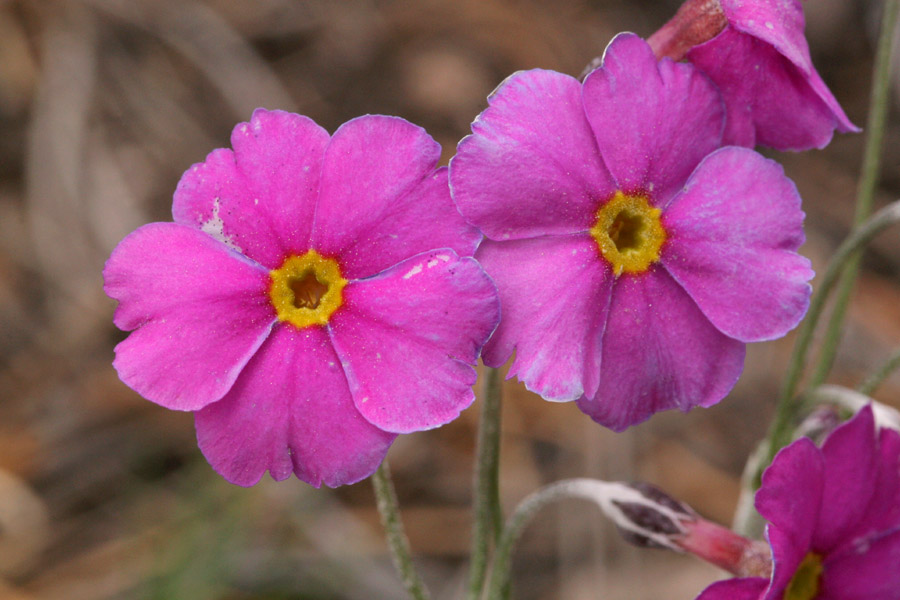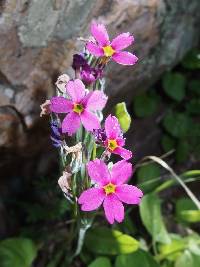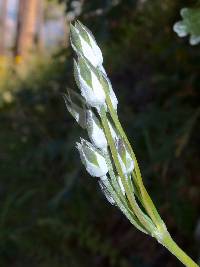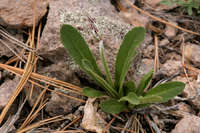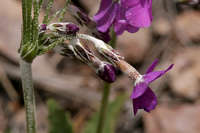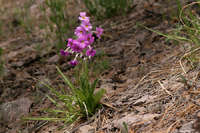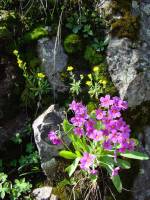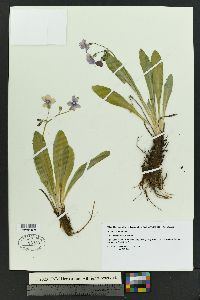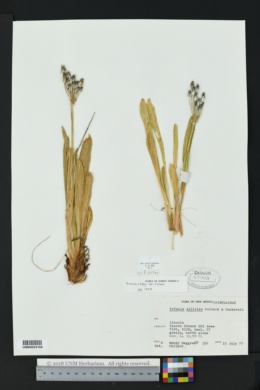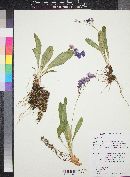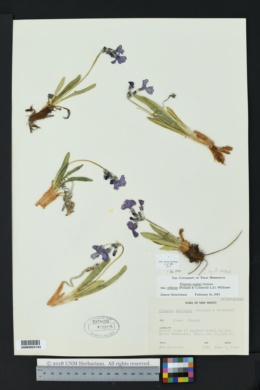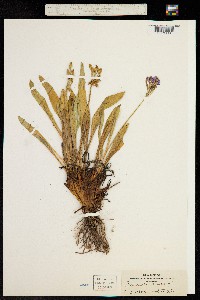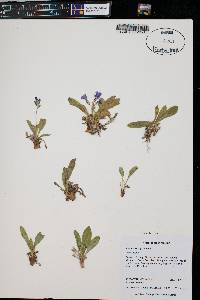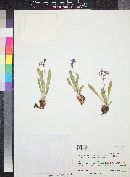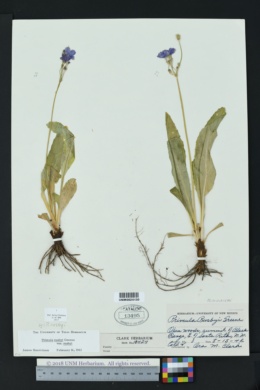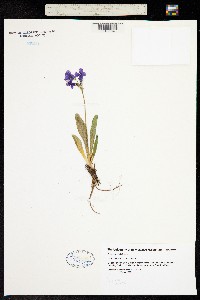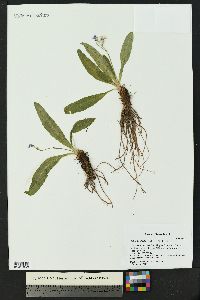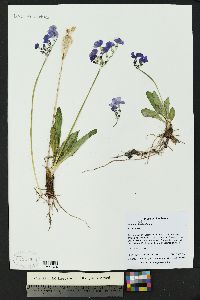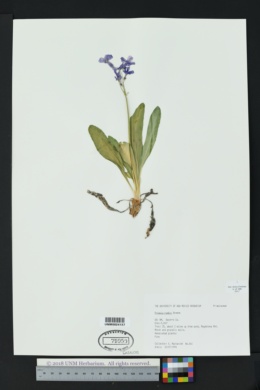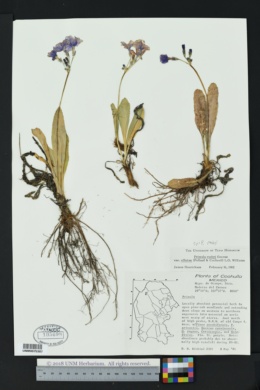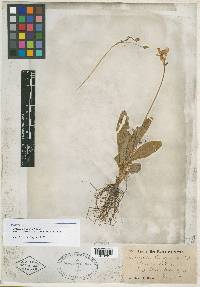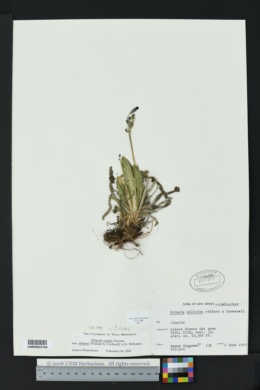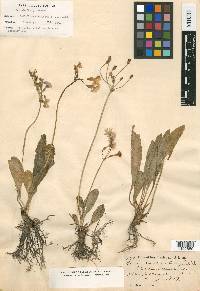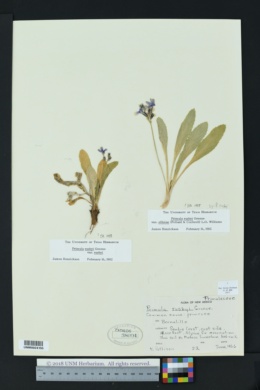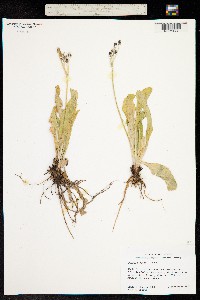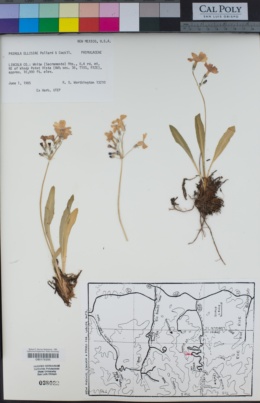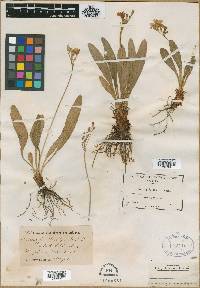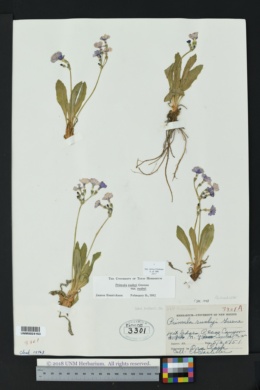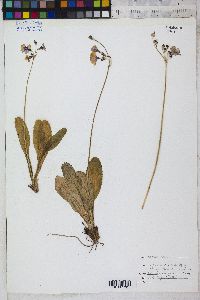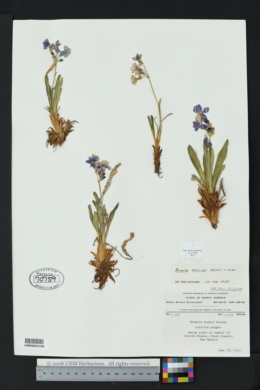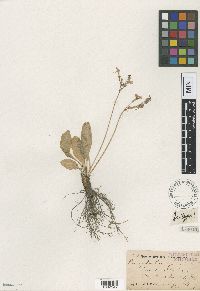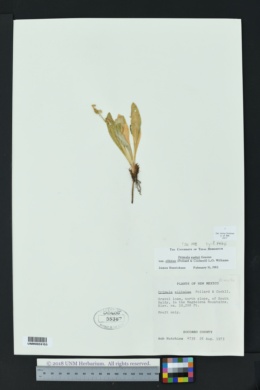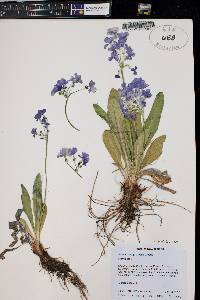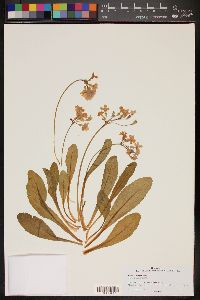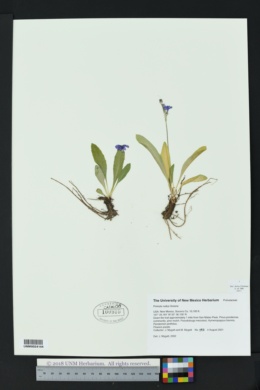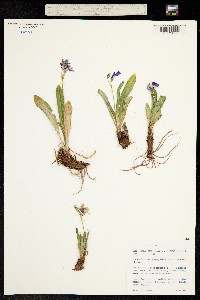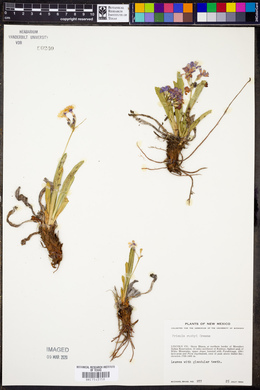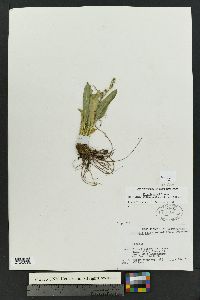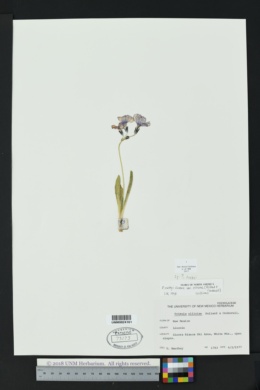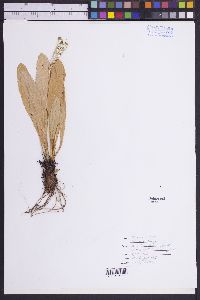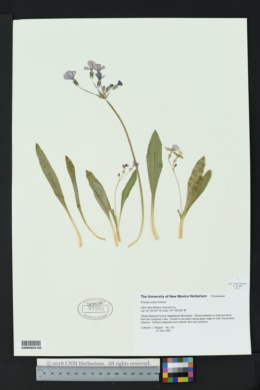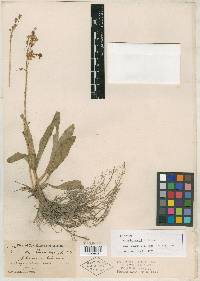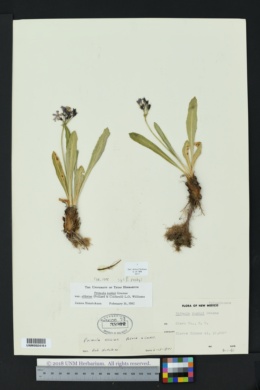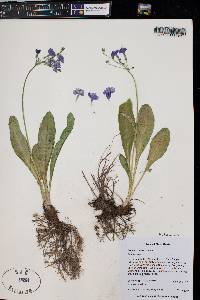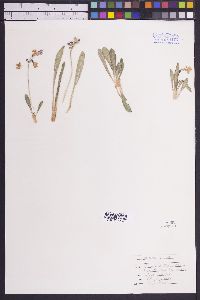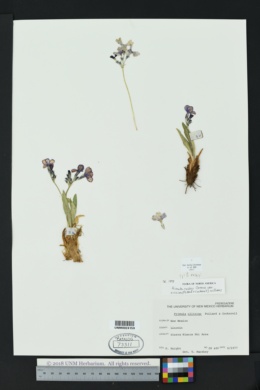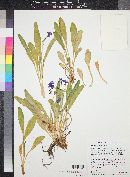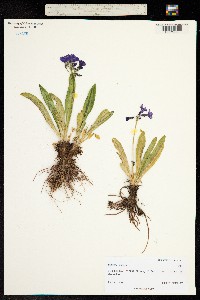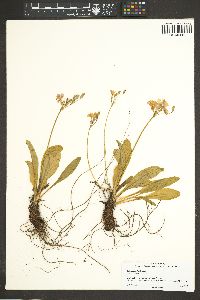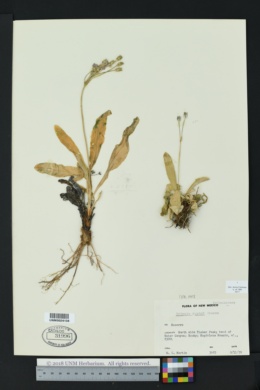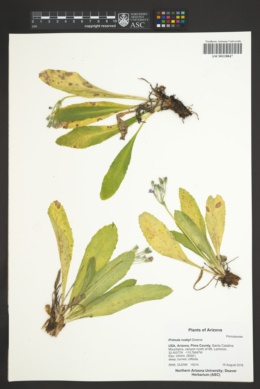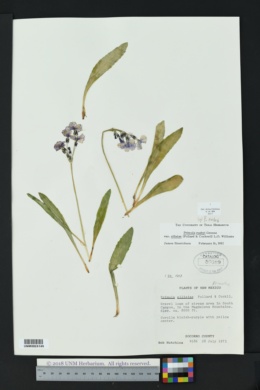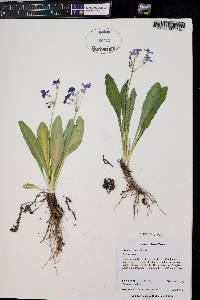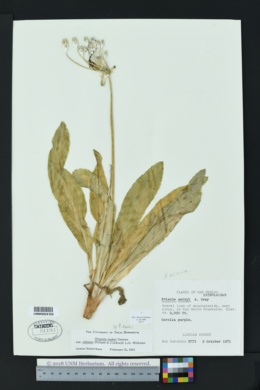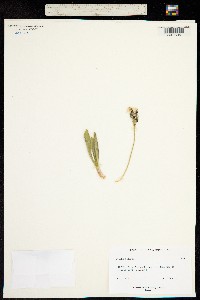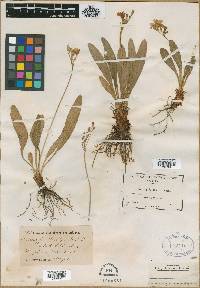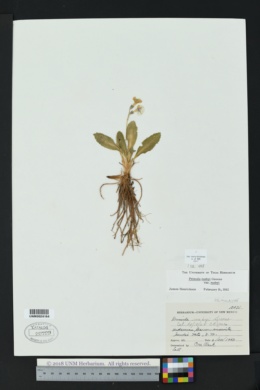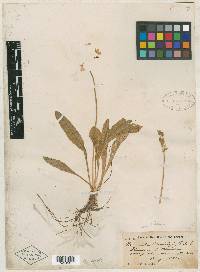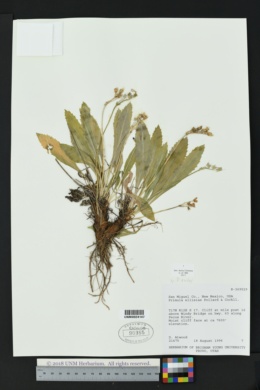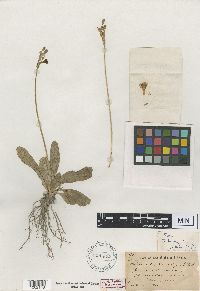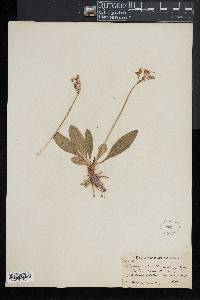Primula rusbyi
|
|
|
|
Family: Primulaceae
Rusby's Primrose, more...Rusby primrose, Sandia Mountain primrose
[Primula ellisiae Pollard & Cockerell, morePrimula rusbyi var. ellisiae] |
Plants 10-20 cm, herbaceous; rhizomes stout, short; rosettes often clumped; vegetative parts farinose only on pedicels and calyx, with prominent farina stripes on calyx. Leaves not aromatic, indistinctly petiolate; petiole broadly winged; blade without deep reticulate veins abaxially, lanceolate to spatulate, 4-15 × 1-2 cm, thick, margins distinctly and evenly denticulate, apex obtuse to somewhat acute, surfaces glabrous. Inflorescences 4-12-flowered; involucral bracts plane, unequal. Pedicels arcuate, moderately thick, 10-35 mm, length 1-5 times bracts, flexuous. Flowers heterostylous; calyx green, with white farinose ridges, cylindric to campanulate, 4-8 mm; corolla rose-magenta, tube 5-15 mm, length 1.2-2 times calyx, glandular, limb 15-25 mm diam., lobes 7-12 mm, apex emarginate. Capsules ellipsoid to ovoid, length 1 times calyx. Seeds without flanged edges, reticulate. 2n = 44. Flowering summer. Moist alpine meadows and ridges, cliff edges; 2400-3300 m; Ariz., N.Mex.; Mexico. Primula rusbyi has the most southern distribution of the species in sect. Parryi, occurring in the mountains of New Mexico and Arizona, and in Mexico and probably northern Guatemala. It is well-marked by toothed leaf margins and a prominently farina-striped calyx. Typically, its corolla tube far exceeds the calyx. Some individuals from the Sandia Mountains of New Mexico have a shorter corolla tube more or less equal to the calyx; these plants have been described as P. ellisiae. A single population can include individuals of both types, and the difference probably represents only a developmental stage of the flowers or minor morphological variation in some localized populations; preliminary genetic analyses (S. Kelso and P. Beardsley, unpubl.) reveal no substantive genetic distinction between these individuals and those from elsewhere in the range.
Plant: perennial herb; 7-28 cm tall, upright stems Leaves: 2-23 cm long, petiolate; blade spatulate or elliptic, generally glandular-pubescent on the lower surface or sometimes glabrous but not mealy, the margins slightly dentate, the teeth gland-tipped (if the margins are entire, the glands terminate the main veins) INFLORESCENCE: a scapose umbel, bracts 2-5 mm long Flowers: magenta; calyx 3.7-8 mm long, densely mealy-white at least near the base; corolla tube 8-13.2 mm long, the lobes (4-)5-10 mm long; stamens 5, generally attached to the upper portion of the corolla tube; style generally shorter than the corolla tube; ovary superior Fruit: FRUITS valvate Misc: Moist sites in coniferous woods, damp ledges and rock crevices; 2300-3200 m (7500-10500 ft); May-Sep REFERENCES: Cholewa Anita F. 1992. Primulaceae. Ariz.-Nev. Acad. Sci. 26(1)2. FNA 2009, Kearney and Peebles 1969 Duration: Perennial Nativity: Native Lifeform: Forb/Herb General: Herbaceous perennials to 20 cm, stems scapose to leafy, arising from a basal rosette, farinose on the pedicels and calyx, roots with stout rhizomes. Leaves: Lanceolate to spatulate, margins shallowly dentate to finely toothed, with conspicuous glands on the margins, petioles broadly winged, upper surfaces glabrous. Flowers: Purple to rose-magenta, large and showy, perfect, regular, 5-merous, the calyx with farinose stripes, borne in groups of 4-12 apically, the involucral bracts lanceolate to lance-ovate, stamens distinct, inserted on the corolla, style and stigma 1. Fruits: Capsules ellipsoid to ovoid, seeds without flanged edges. Ecology: Found in moist alpine meadows, on cliff edges, and damp mossy ledges, from 7,500-10,000 ft (2286-3048 m); flowering May-September. Notes: The surprising flower arises from a somewhat innocuous basal rosette. The keys to this species are the conspicuously glandular teeth of the leaves, and the involucral bracts thin and lanceolate to lance-ovate. Ethnobotany: Unknown Etymology: Primula is from the Latin primus for first, while rusbyi is named for Henry Hurd Rusby (1855-1940) a prominent economic botanist in the United States. Synonyms: None Editor: LCrumbacher, 2011 |
|
|
|

